Some marketing terms are easily interchangeable: metrics and analytics; A/B testing and split testing; buyer persona and customer profile; data and statistics.
You know what’s not interchangeable?
Content advertising and content marketing.
We were asked what the difference is between content advertising and content marketing.
They may seem like the same thing at first glance, but they’re actually different processes used for unique purposes. And it’s important for publishers and brands to understand each individually, so they can choose the best approach for their goals.
That’s why we’re breaking down the difference between content advertising and content marketing — with a little native advertising thrown in there, too.
Here’s what you need to know.
What are content advertising and ad content?
Content advertising is the process of creating content and then using paid distribution channels to promote that content. It can be done using ad content, but it doesn’t necessarily have to be. While ad content is promotional by its nature, you can also promote your regular content through content advertising.
Those paid distribution channels might include email newsletters, search campaigns, or social media ads. And the content could be as simple as a text post and as complex as a video series.
Content advertising vs. content marketing
Now let’s introduce content marketing into the mix. Unlike content advertising, content marketing is the process of creating content to reach customers organically — meaning without the whole promotion part. The pre-roll ad you see on a YouTube video on a brand’s channel, for example, is a form of content advertising, while the YouTube video itself is likely a form of content marketing.
As Content Marketing Institute puts it, content marketing is “the strategic marketing approach of creating and distributing valuable, relevant and consistent content to attract and acquire a clearly defined audience.”
Again, that content could be in any format — blog post, infographic, video, podcast, whitepaper — but it’s created for the purpose of informing or entertaining the customer and building a connection, instead of explicitly selling a product.
Take these BarkPost blogs from the brand BarkBox. This is a form of content marketing since it comes from the brand and provides helpful information for the reader but doesn’t actively sell or promote a product.
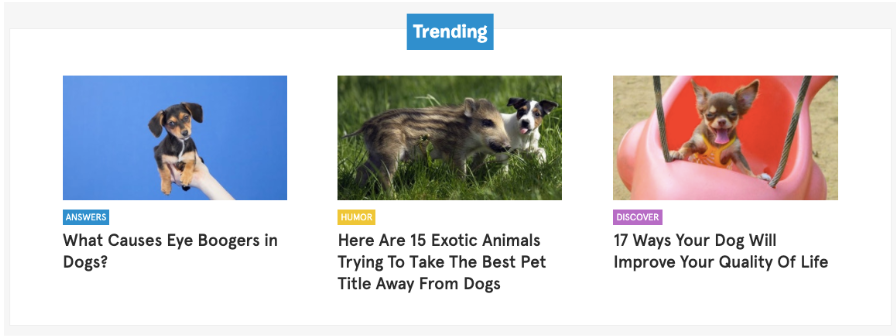
At their core, content advertising and content marketing both prioritize content. It’s in their names, after all. They need high-quality content in order to drive results. And they may be distributed on the same channels. It’s just that content advertising is for promoting content while content marketing is created for the sake of, well, sharing content.
Content advertising vs. native advertising
Then, of course, there’s native advertising, which has also been used interchangeably with content advertising. The difference here is that native ad content is specifically created to blend into surrounding content. It’s a little bit content marketing — because it’s often created to educate or entertain audiences instead of sell to them — and it’s a little bit content advertising because it’s distributed with paid placements, often on publisher websites, in email newsletters, or within social media feeds.
This New York Times article sponsored by Vanguard, for example, is native advertising. It looks like a regular New York Times piece and provides informative research, but has the “Paid Post” disclaimer and covers a topic that’s related to the brand.
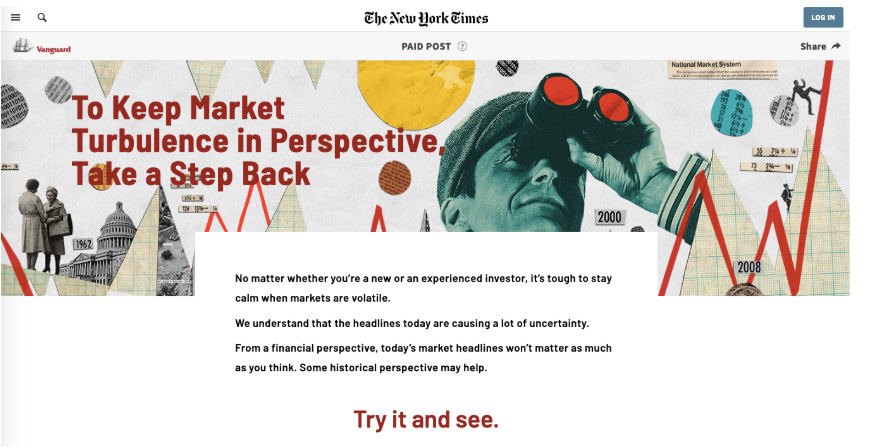
Benefits of content advertising
Why use content advertising? Because you can create content specifically for certain customers and audiences and segments, and then use paid features to target those audiences directly, increasing reach, engagement, conversions, and revenue. As Epsilon reported, 80% of customers are more likely to buy when they’re delivered personalized brand experiences.
Also, organic reach is declining, making it tougher than ever for brands to reach audiences with content marketing. According to We Are Social, the average organic reach of a Facebook page is merely 5.20%. Meaning you’re creating all that content and putting all that effort in for just a fraction of the reward. Evidently, it’s becoming more important than ever to use paid promotion to cut through the digital noise and ensure they’re reaching the most interested consumers. And brands can do that with content advertising.
Examples of content advertising
Once you understand exactly what content advertising is, it’s easy to spot it in the wild.
This sponsored Facebook post for Zillow, for example, is a form of content advertising. It uses high-quality content to specifically promote its service.
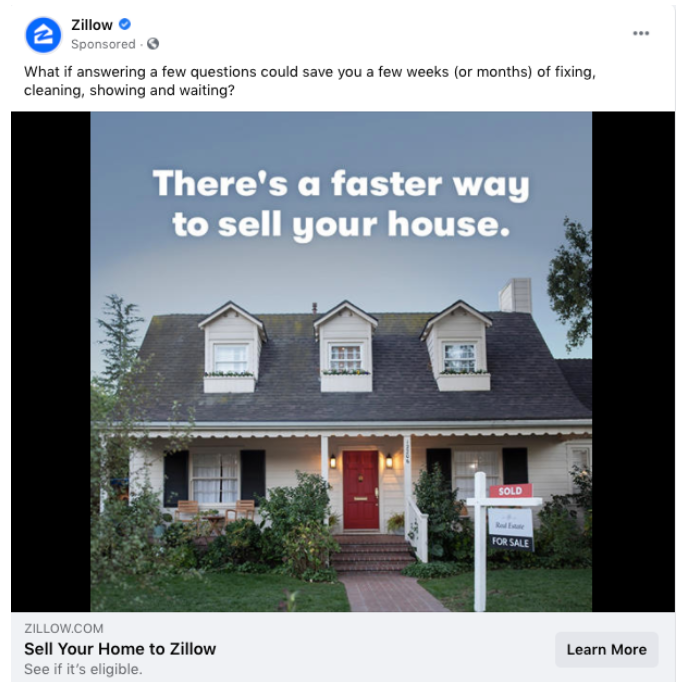
This sponsored email from Gusto is also a form of content advertising. It uses the organic channel of email, and includes an eye-catching, smartly designed graphic, but it does, in fact, sell a product and call upon the reader to learn more.
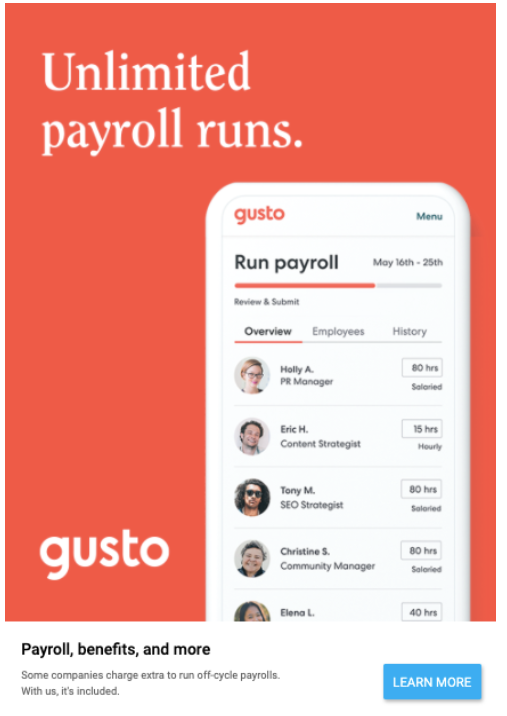
These search results for dressers? They’re a form of content advertising, too, as you can see from the “Ads” disclaimer. These brands use the search channel and pay to reach targeted customers (i.e. those looking for dressers or relevant products) with their ad content.
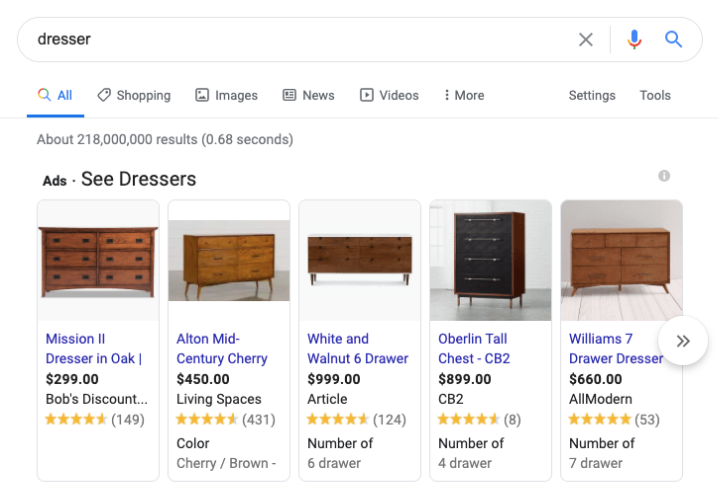
Content advertising tools
There are many tools out there for content advertising on high-converting channels like email, web, and push notifications. But instead of trying to use separate programs for each — and go through the headache of integrating them — it’s better to use one tool that encompasses them all.
Take Jeeng. With our all-in-one advertising solution, brands and publishers can launch, manage, and track their content advertising campaigns from a single hub. Our Jeeng AdServe even integrates with Google Ad Manager, so you can expand your existing web program with direct-sold ad content in email newsletters.
Jeeng also automatically sends personalized push notifications and emails to customers based on first-party data about their preferences, behaviors, and interests. And it all happens on one platform, so you can synchronize your campaigns across touchpoints and increase revenue through multichannel messaging.
Getting it right
We get it. Mix-ups happen. Content marketing gets exchanged for content advertising every now and then. The world goes on. Still, you want to make sure you understand the differences when it comes time to propose new strategies, increase audience engagement, and meet that bottom line. Because then you can choose the best tools and techniques to help you reach your business goals and, of course, your customers.
Ready to get started with content advertising? Reach out today to see how we can help.




